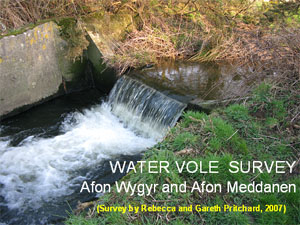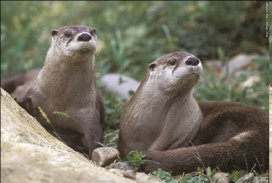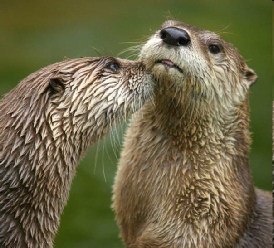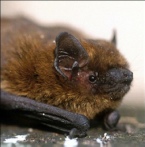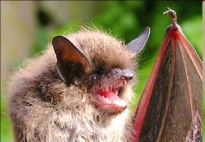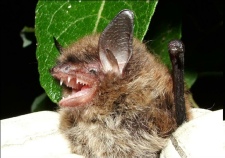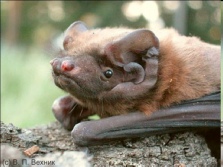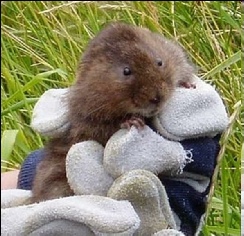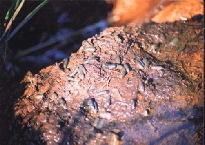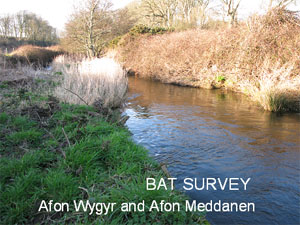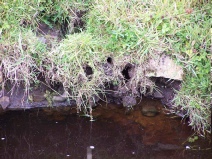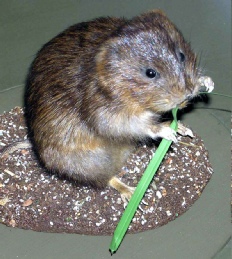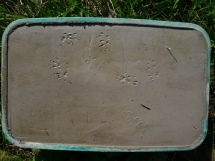

Cymdeithas Hanes Mechell

The Demography of Llanfechell 1851 & 1901
William Bulkeley and the poor of Llanfechell
Llanfechell in the early 19th Century
In March 2007 a survey was carried out by Gareth and Rebecca Pritchard on behalf of Menter Mon and the Prosiect Dyfrgwn Ynys Mon/ Anglesey Otter Project.
They looked for spraints at all likely spots (such as prominent rocks) along the river boundaries, and signs of activity such as footprints and potential holts.
What they found-
•Number of sprainting sites found: 22
•Number of spraints found: 48
“It is quite likely that human disturbance and potentially, disturbance by dogs is restricting the amount of signs that the otters are leaving on the lower reaches of the river where it flows into the sea, but there is no doubt that the otters will be using the whole length as an access route to the sea for foraging … footprints were also found along this section.”
it flows into the sea, but there is no doubt that the otters will be using the whole length as an access route to the sea for foraging … footprints were also found along this section.”
What they found-
Afon Meddanen:
•Number of sprainting sites found: 16
•Number of spraints found: 29
“The habitat along this section is excellent for otters: it is wooded along the majority of its length and is largely undisturbed. It is very likely that otters are using this area to lie up and potentially as a holting area.”
Conclusion-
Otters are active along both the Afon Wygyr and Afon Meddanen.”
“It is likely that the otters are feeding on both freshwater fish species and also foraging in the sea along the shore at Cemaes”
A survey was carried out in 2008 by members of the Gwynedd Bat Group within the woodlands that border the rivers.
•7 species of bats were identified.
•Bats were using woodland edges and the river corridor as flight lines for foraging and commuting.
•There are 17 species of bat in the UK.
•All bats are protected by law because numbers have decreased dramatically in recent years.
•Only 10 out of the 17 species are found on Anglesey.
And here they are-
Common Pipistrelle
(Pipistrellus pipistrellus)
Soprano Pipistrelle (Pipistrellus pygmaeus)
Brown Long Eared Bat
(Plecotus au ritus)
Whiskered Bat (Myotis mystacinus)
Brandt’s Bat
(Myotis brandt)
Noctule Bat
(Nyctalus noctula)
Daubenton’s Bat
(Myotis daubentonii)
The Water Vole
The Water Vole (Arvicola terrestris) is the largest British vole.
•It is found near waterways and on river banks.
•Numbers have declined dramatically in recent years due to: -
–Loss of habitat (Farming, Building etc)
–Pollution
–Poisoning
–Predation (particularly by American Mink)
The Anglesey Water Vole Project
•Anglesey is recognised as an important area for water vole conservation nationally
•The Water Vole Project was set up in 2001
•Water voles are included in the Anglesey Biodiversity Action Plan
Water Vole latrine
Water Vole burrows
Water Vole feeding station showing chopped up grass
Tracks of Water Voles
Results of the survey
Voles were found all along the Wygyr wherever the habitat was suitable:
*******************************************************
